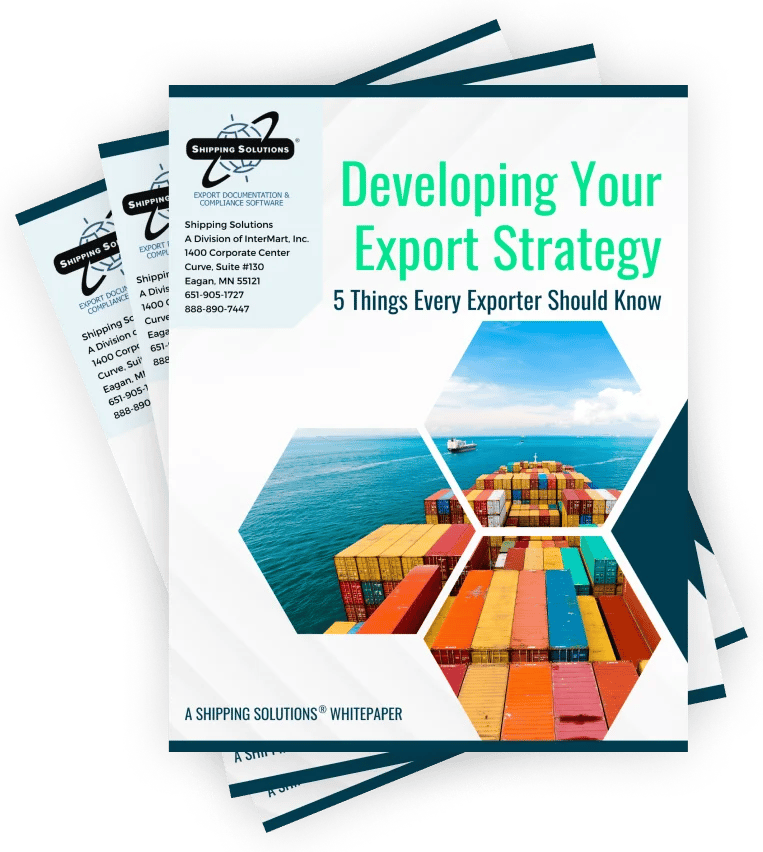The International Trade Blog International Sales & Marketing
Why U.S. SMEs Struggle with Exporting and How to Fix It
On: August 28, 2024 | By:  Kari Crane |
2 min. read
Kari Crane |
2 min. read
 International trade is a cornerstone of the U.S. economy, contributing significantly to its gross domestic product (GDP). In 2022, U.S. GDP was $25.46 trillion, representing a quarter of the global GDP. With total international trade in goods and services reaching $6.97 trillion, the U.S. set export records with 73 trading partners. However, as the complexity of exporting rules and systems increases, small and medium-sized enterprises (SMEs) face significant challenges in navigating this landscape, explored in a whitepaper from the Minnesota District Export Council (DEC): Bridging the U.S. National Export Skills Gap.
International trade is a cornerstone of the U.S. economy, contributing significantly to its gross domestic product (GDP). In 2022, U.S. GDP was $25.46 trillion, representing a quarter of the global GDP. With total international trade in goods and services reaching $6.97 trillion, the U.S. set export records with 73 trading partners. However, as the complexity of exporting rules and systems increases, small and medium-sized enterprises (SMEs) face significant challenges in navigating this landscape, explored in a whitepaper from the Minnesota District Export Council (DEC): Bridging the U.S. National Export Skills Gap.
Areas of Exporting with a Skills Gap
The DEC whitepaper explains that a lack of seasoned professionals who understand exporting is a key barrier to exporting for SMEs. These are some of the areas where the U.S. is falling short, according to the whitepaper:
1. Educational System Gap
Traditional educational systems in the U.S. often overlook export-focused programs. Many colleges and universities offer only token courses on international trade, leaving a gap in the foundational knowledge required for effective exporting.
2. Business Gap
U.S. businesses struggle to integrate trade expertise into their operations. Larger companies often silo trade functions, while smaller businesses lack the resources to recruit and retain export professionals, leading to missed opportunities and increased risks.
3. Government Gap
Institutions like the International Trade Administration’s U.S. Export Assistance Centers lack the resources to meet the vast needs of businesses, particularly SMEs.
4. Regulations Gap
Complex and dynamic export regulations disproportionately affect smaller exporters. The punitive approach to minor reporting errors and the lack of simplified guidance increase the risk of non-compliance, deterring SMEs from pursuing export opportunities.
5. Export Assistance Market Gap
The network of attorneys, consultants, bankers, freight forwarders and software vendors supporting exporters also faces a shortage of qualified staff. Private training firms and industry organizations struggle to fill this educational void with consistent quality and success.
Recommendations
The DEC whitepaper explains these challenges in more detail, looks at how other countries are succeeding and offers several proposals to make exporting more successful in the U.S. You can read the full whitepaper here: Bridging the U.S. National Export Skills Gap.
Like what you read? Join thousands of exporters and importers who subscribe to Passages: The International Trade Blog. You'll get the latest news and tips for exporters and importers delivered right to your inbox.

About the Author: Kari Crane
Kari Crane is the editor of Passages: The International Trade Blog. Kari joined Shipping Solutions after working as an editor, writer and designer at a major market newspaper in Texas. Kari has spent her career finding different ways to tell stories and make complex topics easy-to-understand, so she loves helping importers and exporters understand how to navigate the complex world of international trade.


